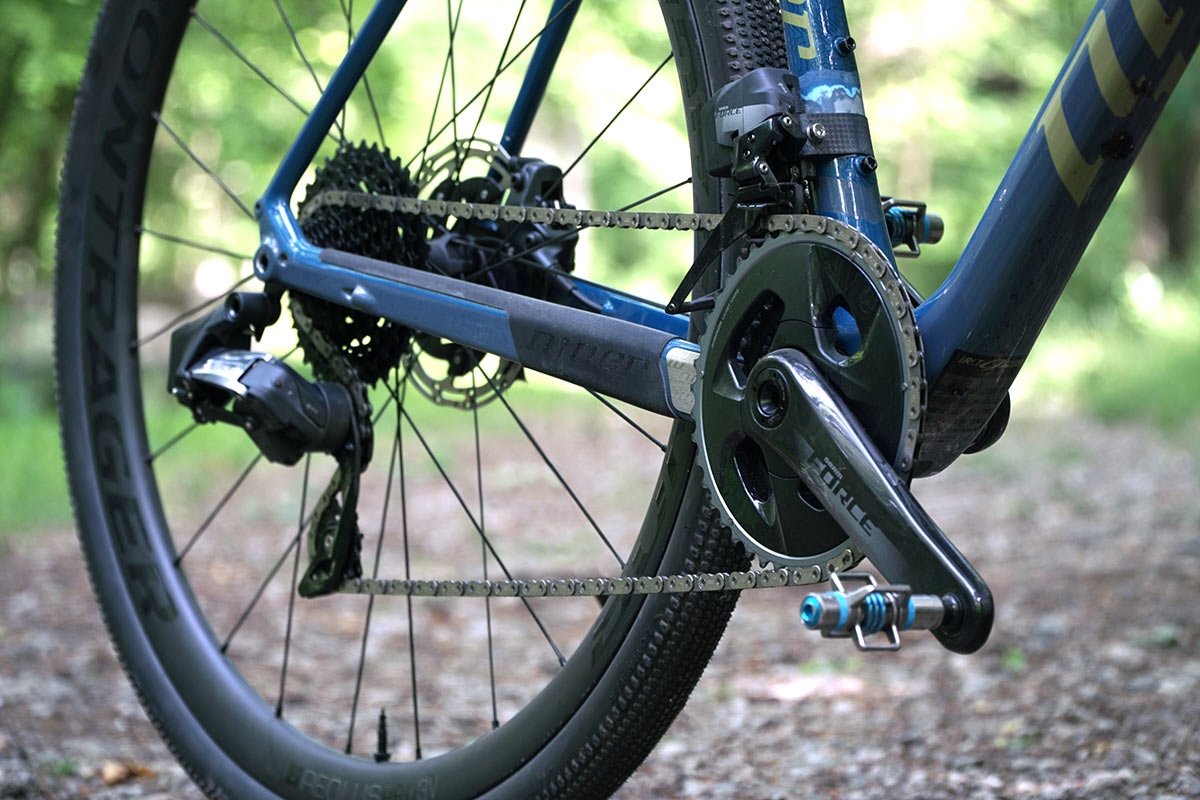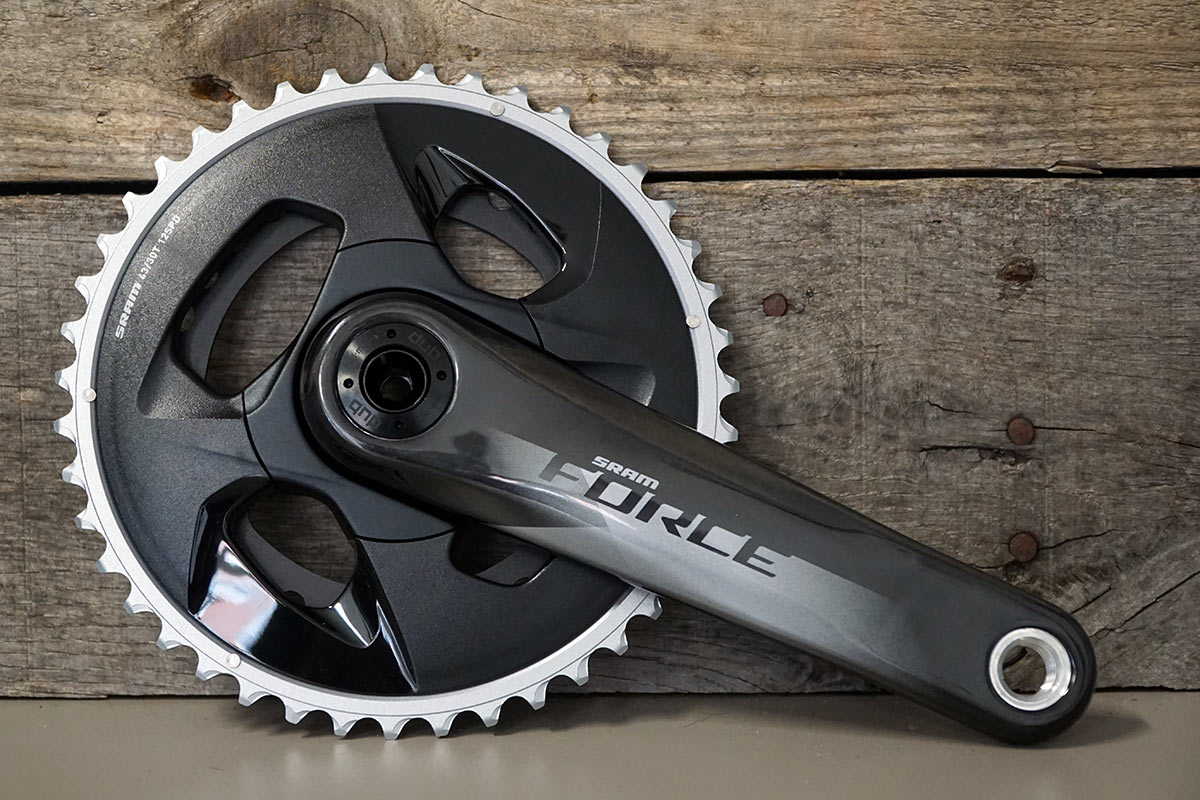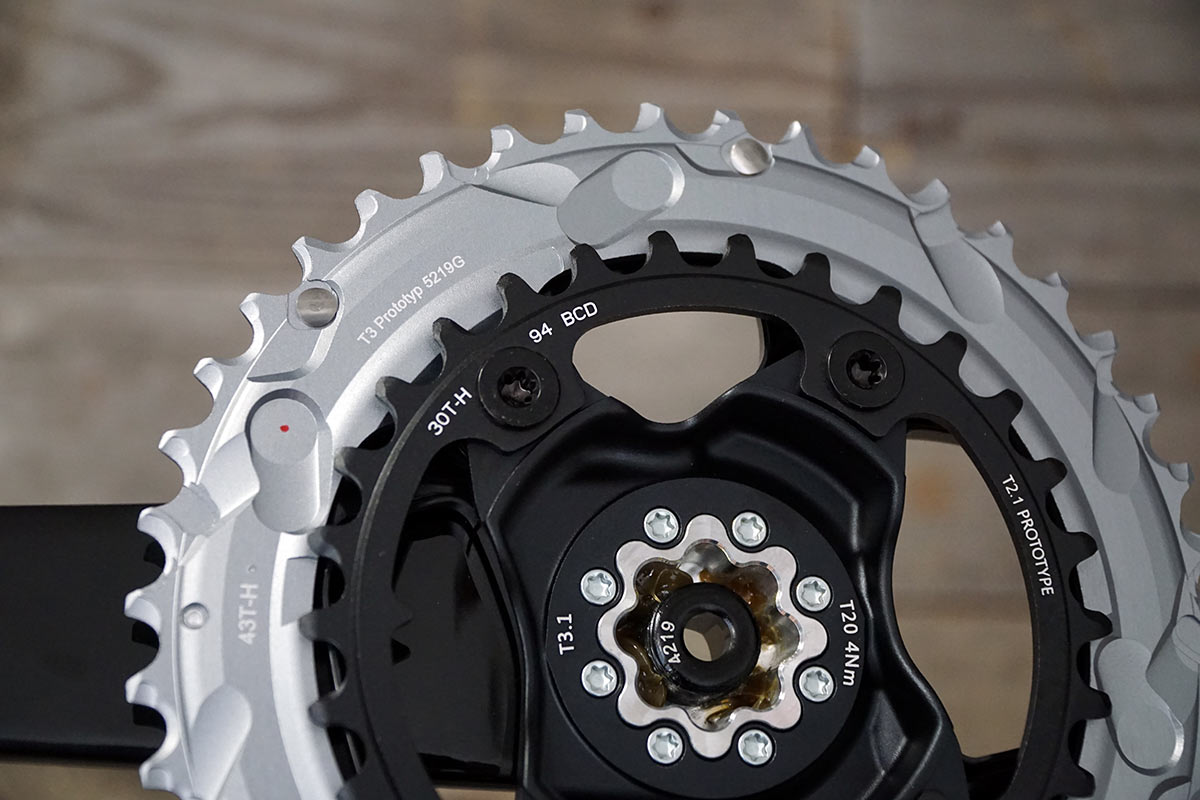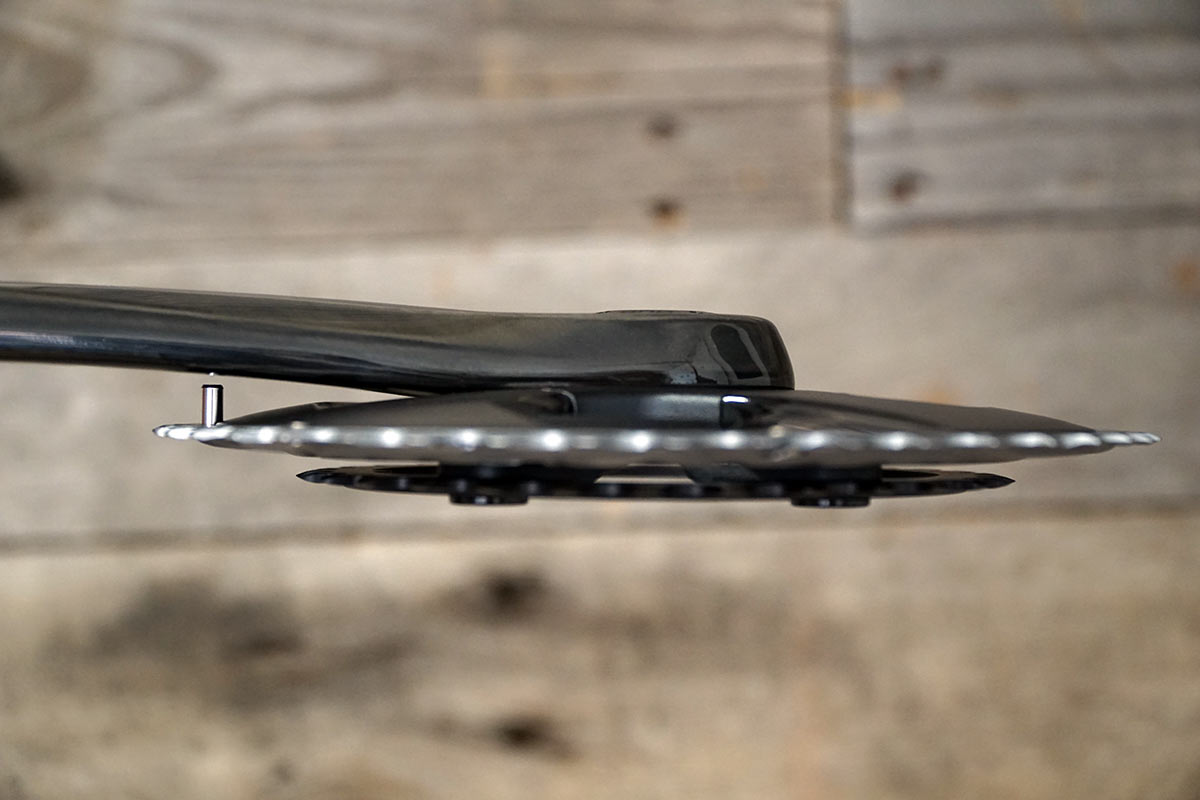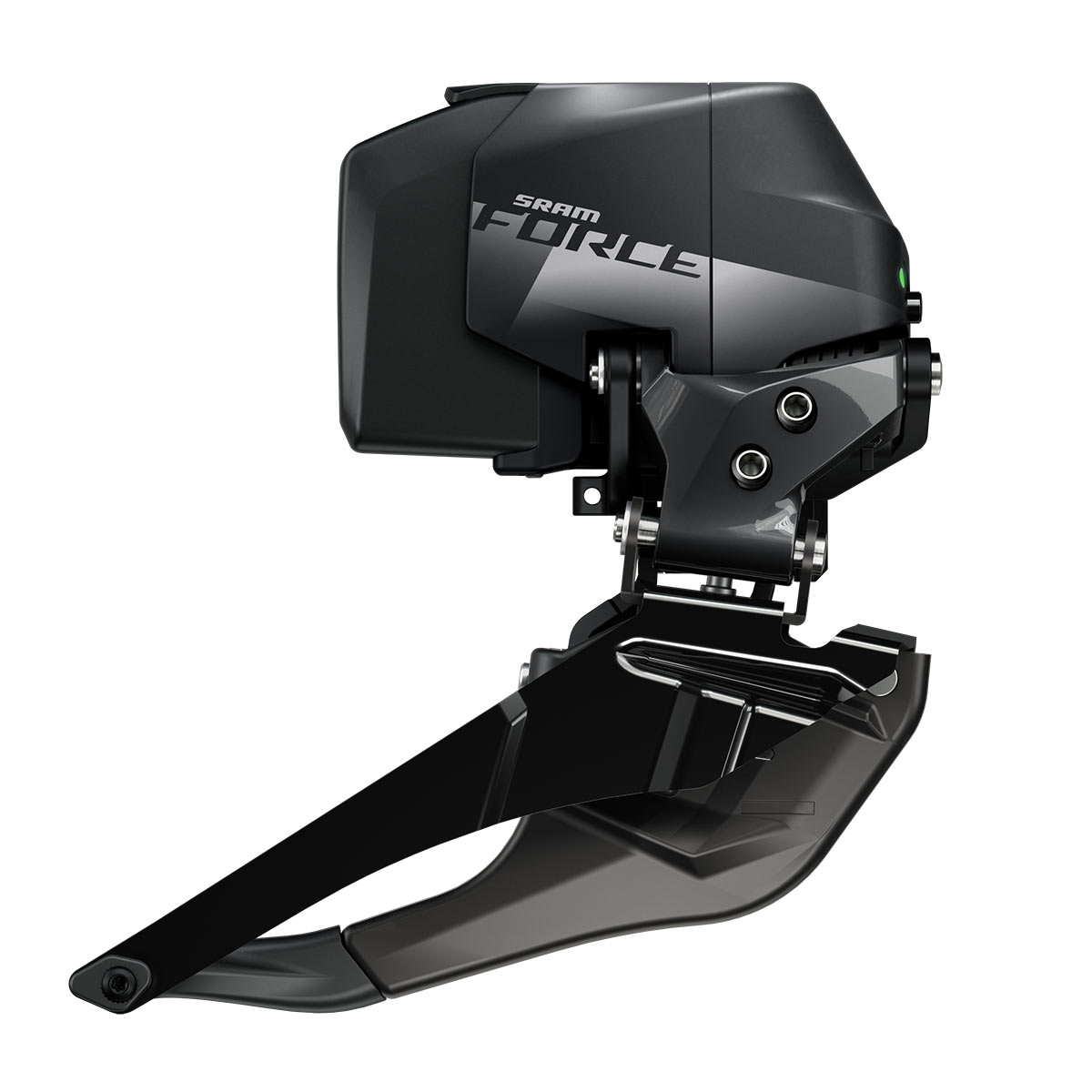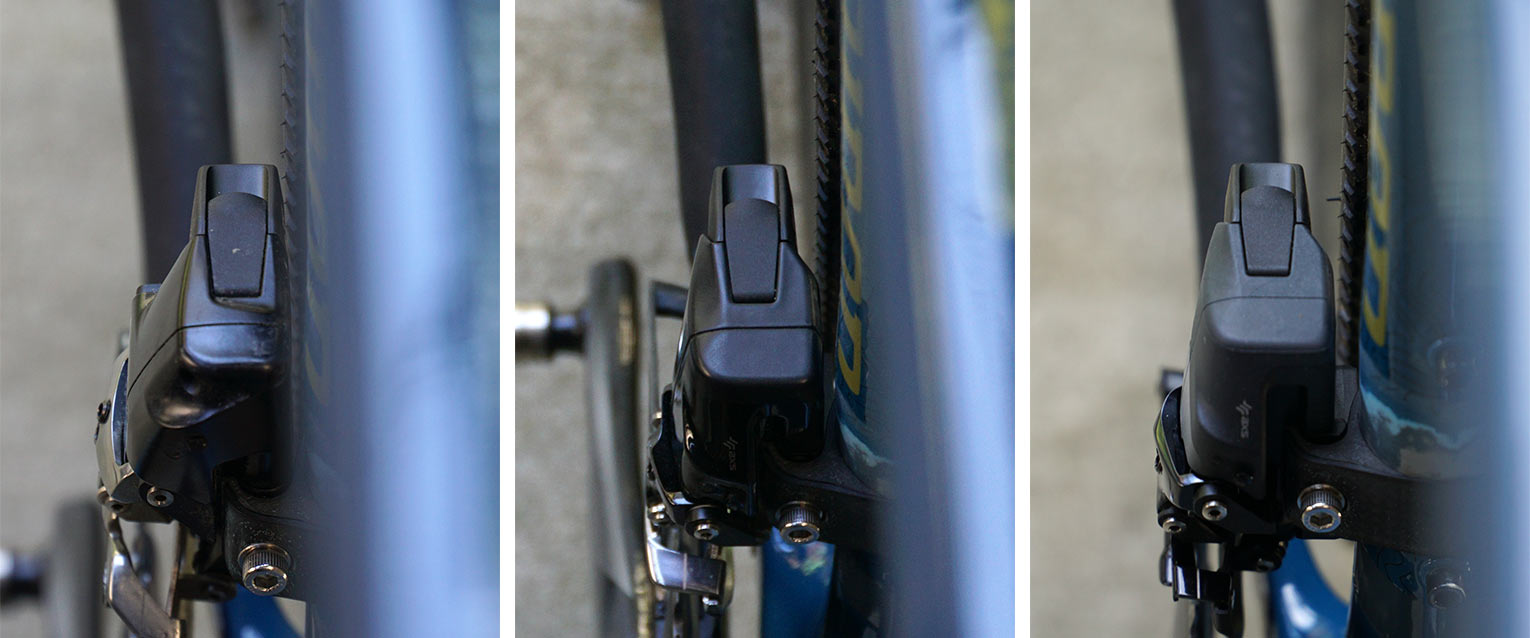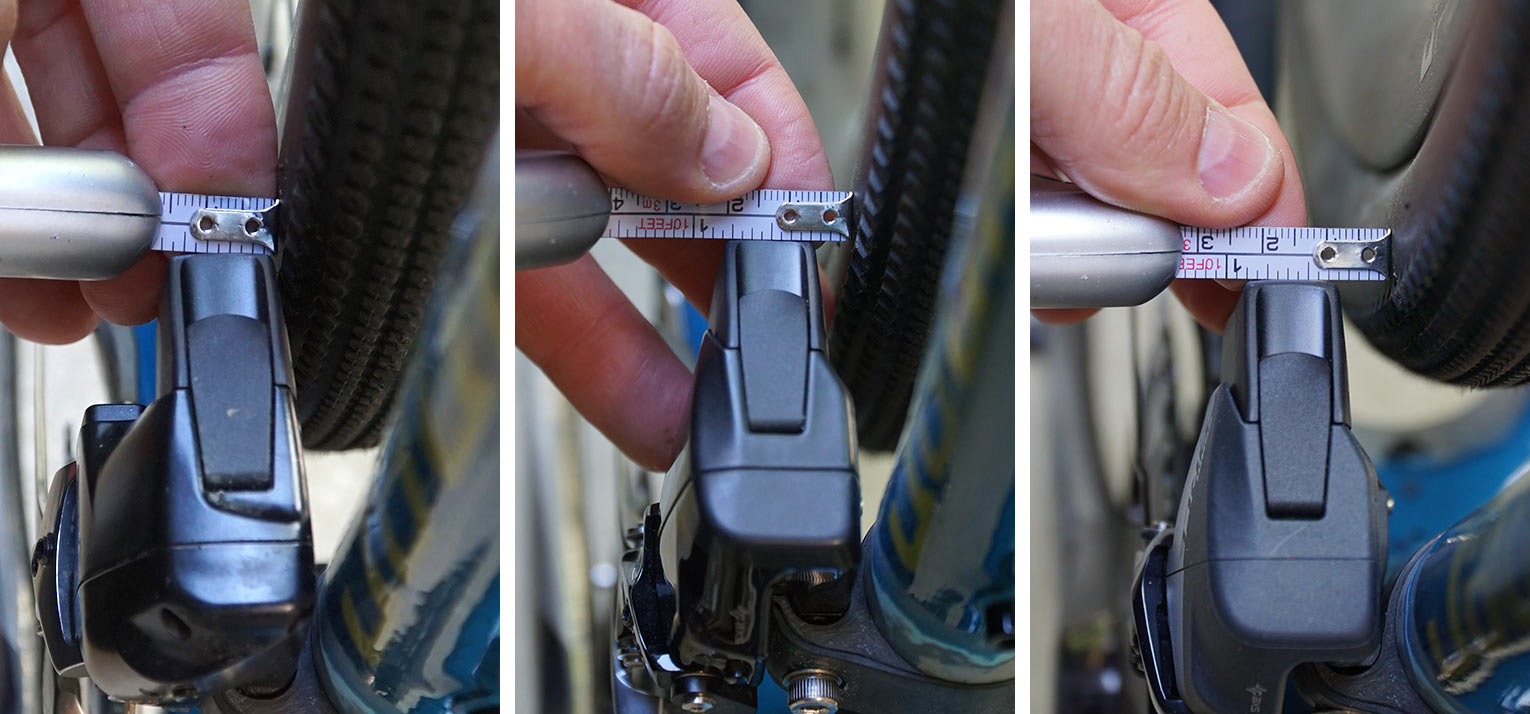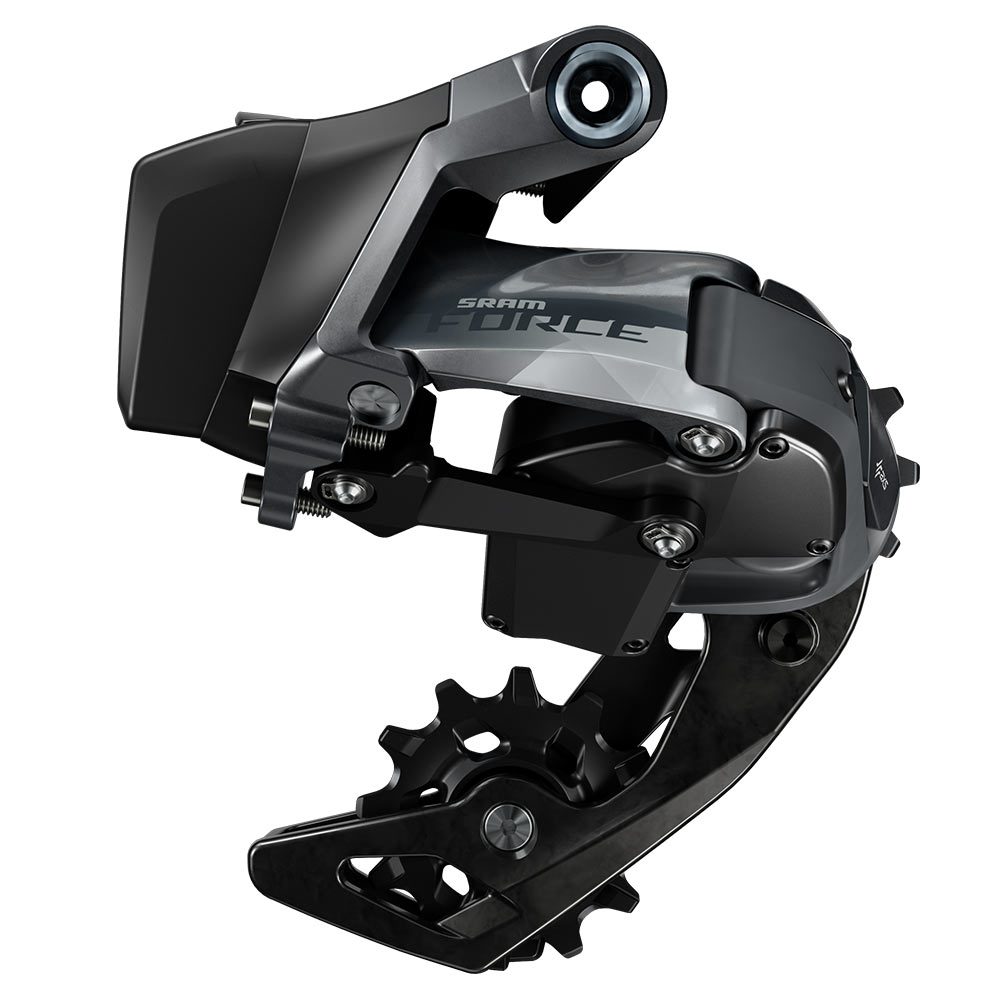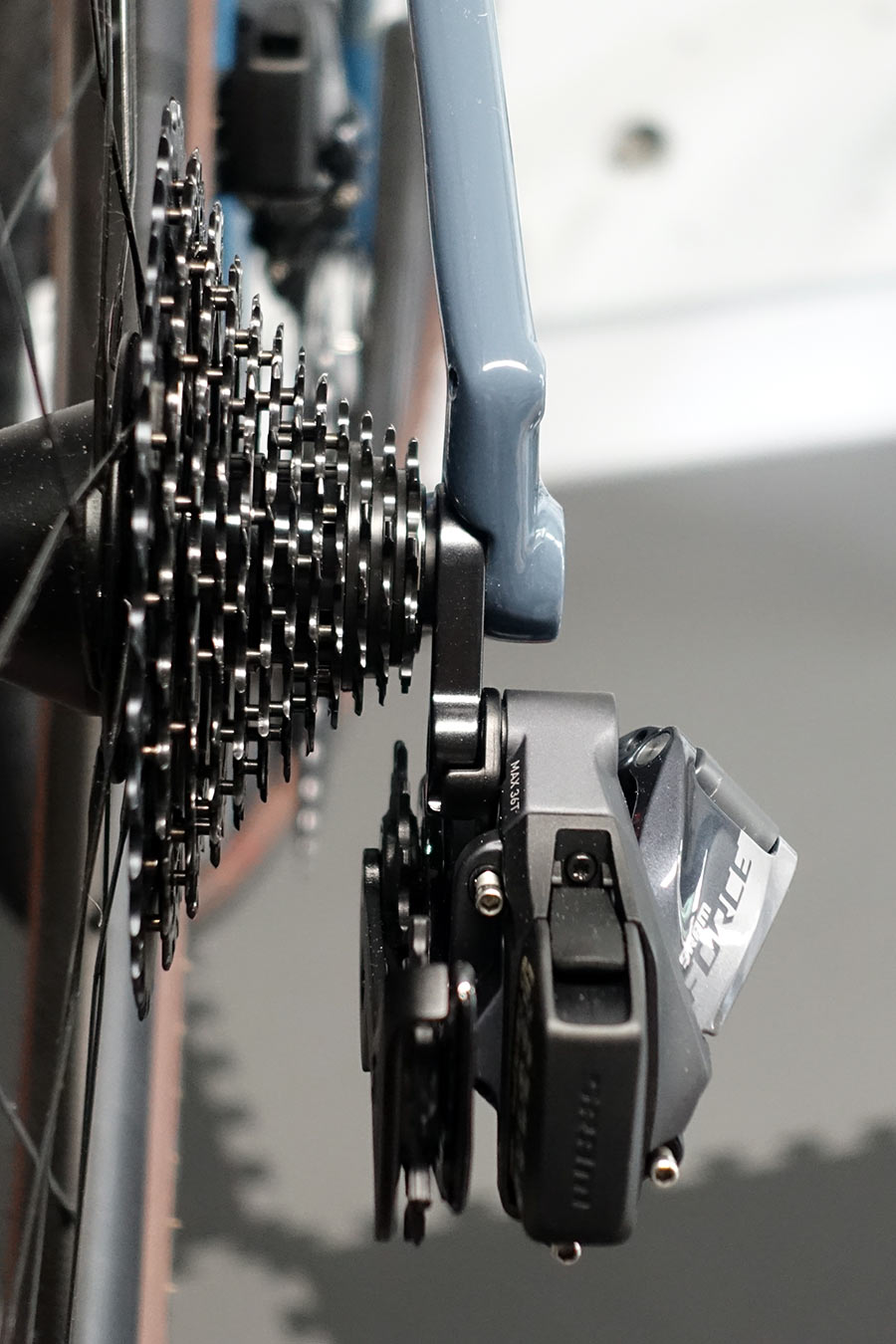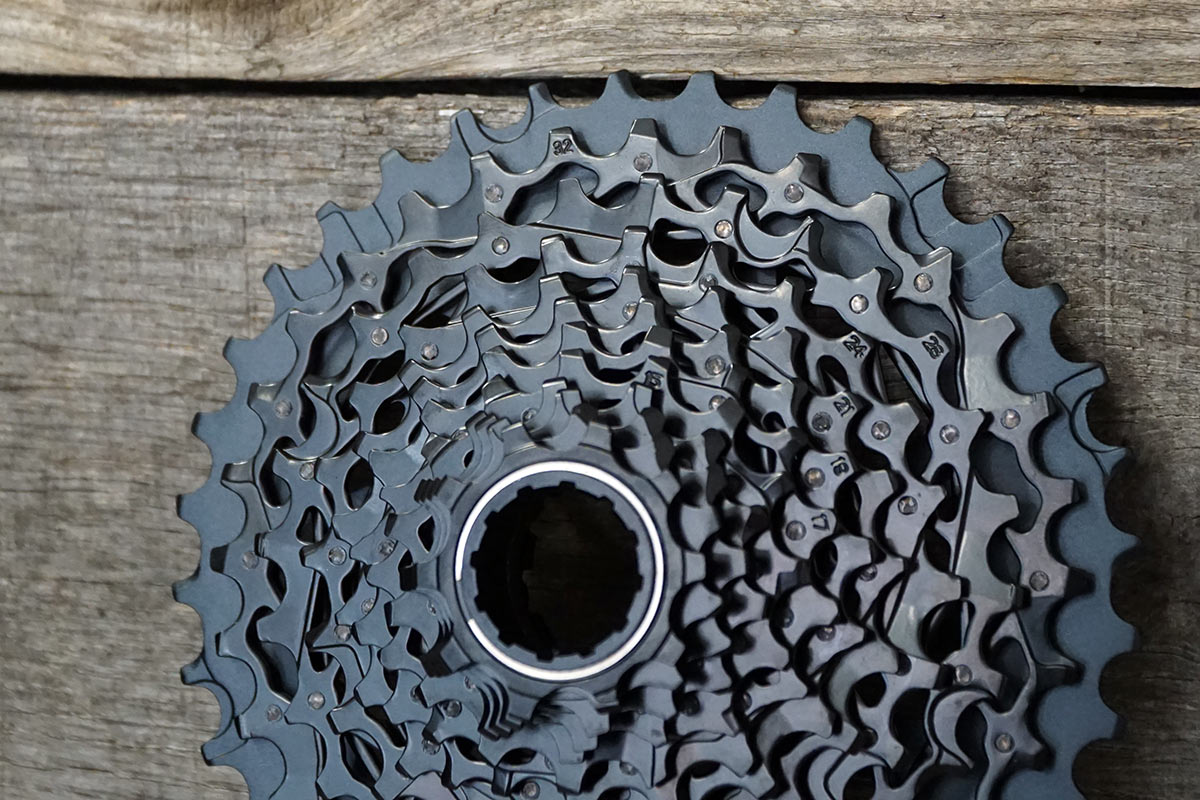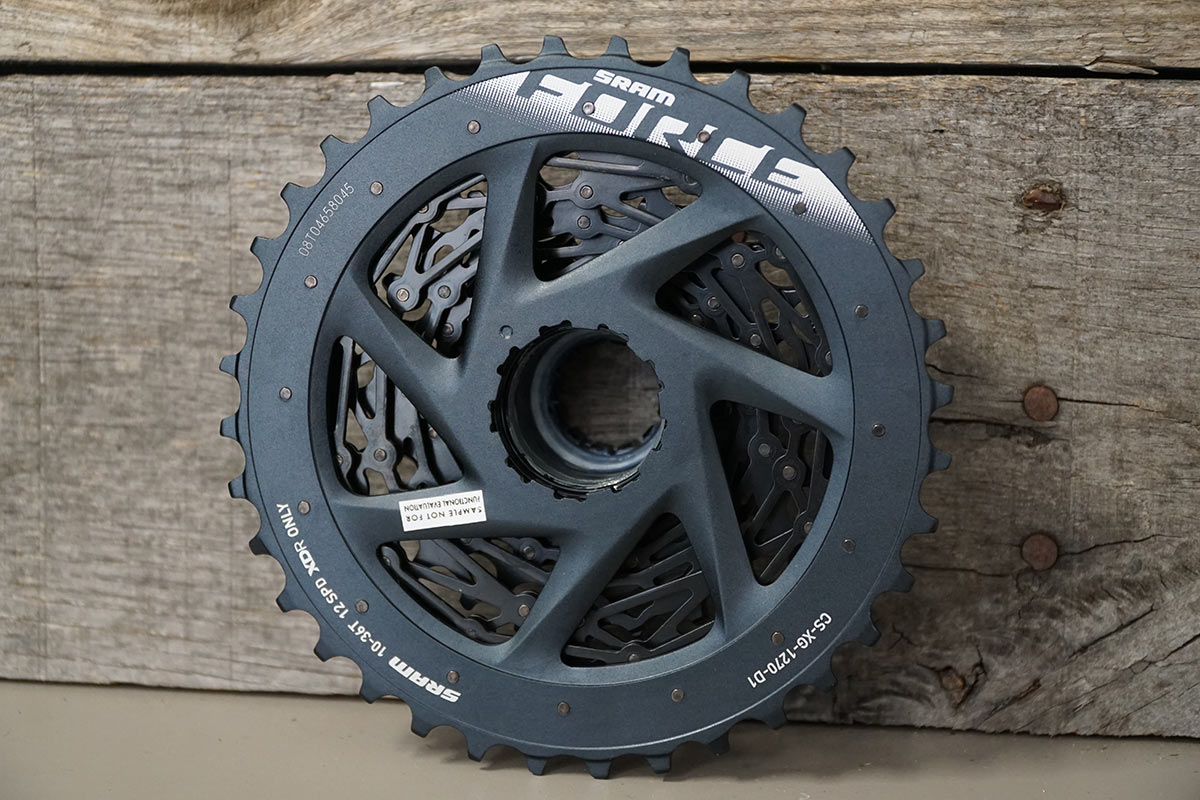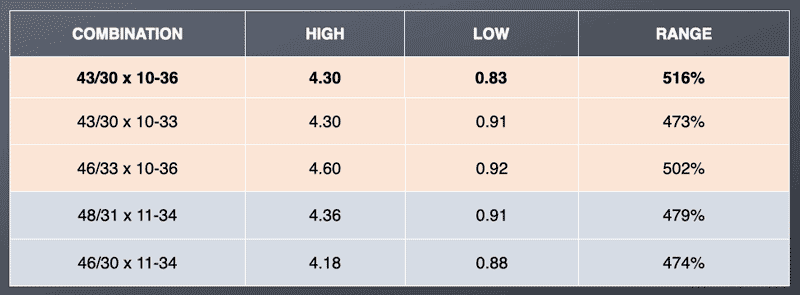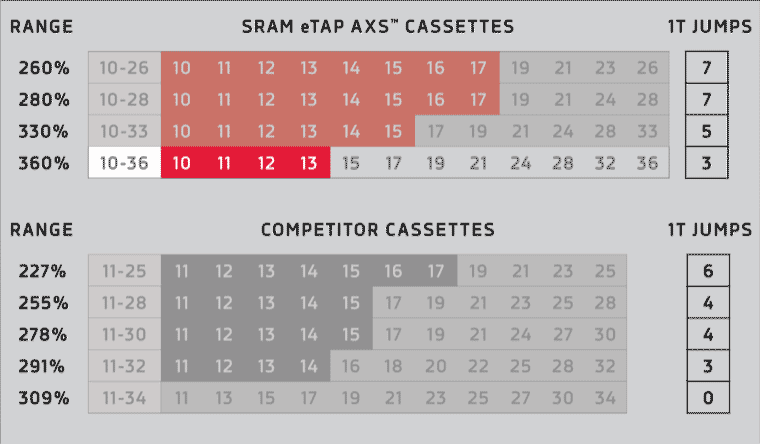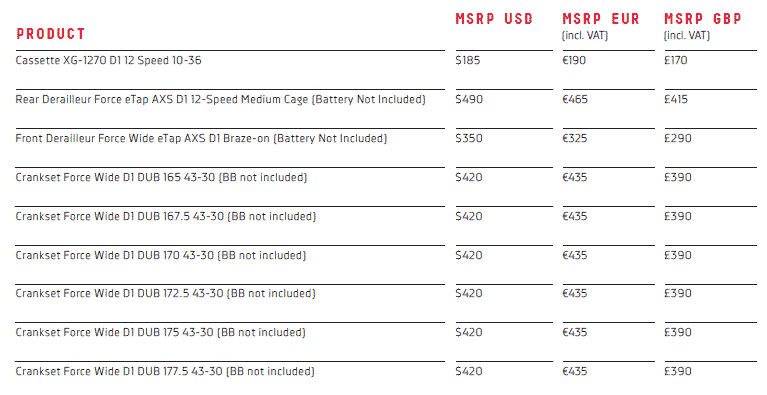The all new SRAM Force AXS 43-30 wide range drivetrain combines lower front gearing with a wider range 10-36 cassette for a mix-and-match group that’ll make any climb easier. Both require new derailleurs, which bring other improvements with them, too.
It’ll also improve tire clearance, letting us run bigger, wider tires. It’s not technically a “gravel” group, it’s just another option for, um, gravel. But also adventure and touring bikes. And even regular road bikes if you live somewhere steep.
Really, it’s like two separate systems, one for the front, and one for the rear, and you can blend either one into existing AXS drivetrains to create your perfect setup. Here’s the complete tech breakdown, specs & pricing, along with a visual comparison of prior eTap and AXS derailleurs…
Force AXS 43/30 crankset and front derailleur
Let’s just go ahead and rip this Band-Aid off: If you want to use this new ultra-compact crank-and-chainring set, you’ll have to buy the complete crankset and the new 43/30 front derailleur. Here’s why:
The new cranks have a 5mm wider DUB spindle. That pushes the Q-Factor out 2.5mm per side, and pushes the chainline out 2.5mm to 47.5mm. And that’s not all.
The new 43/30 chainring combo uses a smaller 94mm BCD, down from 107mm on the other AXS groups.
Buuuuut, it still uses their newer 8-bolt direct mount spline pattern, though. And they share the same 13-tooth gap between big and small chainrings. Which means…
You could put these chainrings and spider on an existing SRAM crankset for use with a standard AXS front derailleur, however you’d give up the increased tire clearance. That also means you could mount the standard SRAM 12-speed chainrings (on their 107bcd spiders) to this spindle to use with the Wide front derailleur!
Nutshell version: Mix and match spindles and derailleurs as desired, just make sure you’re pairing Wide/Wide or Standard/Standard up front.
Additionally, by using the same 13-tooth jump, you can mix and match this crankset with any of their 12-speed AXS rear derailleurs and cassettes and maintain the same “gap” compatibility on the rear derailleur (more on that in a minute).
Basically, you can mix and match most everything in the AXS universe now to create the exact setup you want, with the few caveats mentioned here. Aren’t you glad you didn’t jump straight to the comments section?
One limitation with the 94BCD is a lack of spider-based power meters. The Quarq power meter won’t fit inside that smaller BCD, but now that they own PowerTap, they recommend the PowerTap P2 pedal power meters.
What’s impressive is the range of lengths offered: They come in 165, 167.5, 170, 172.5, 175, and 177.5 mm lengths. They also get a new gloss finish to differentiate them from the standard Force 12-speed cranks, and that carries over with hits of gloss on the derailleurs, too.
And yes, if you really like a wider Q-factor, you could mount their 1x chainrings to these cranks, just note that it’ll also push your chainline out and may not offer the smoothest, quietest performance on the tall end of your cassette.
The “Wide” part of this derailleur doesn’t mean “wide range”. It simply refers to the fact that it sits out wider from the frame.
Now that everything is pushed out farther, you’ll want to order the correct DUB bottom bracket to go with it, which basically gets you a wider spacer kit with the BB (Our guess is you can simply add a 2.5mm spacer to each side if you already have a DUB BB installed). They make options to fit virtually every frame standard except Trek’s BB90.
How do Regular & Wide eTap AXS front derailleurs compare?
From the side, the new Force AXS wide front derailleur (above, right) looks the same as the non-wide version (Red AXS FD shown on left).
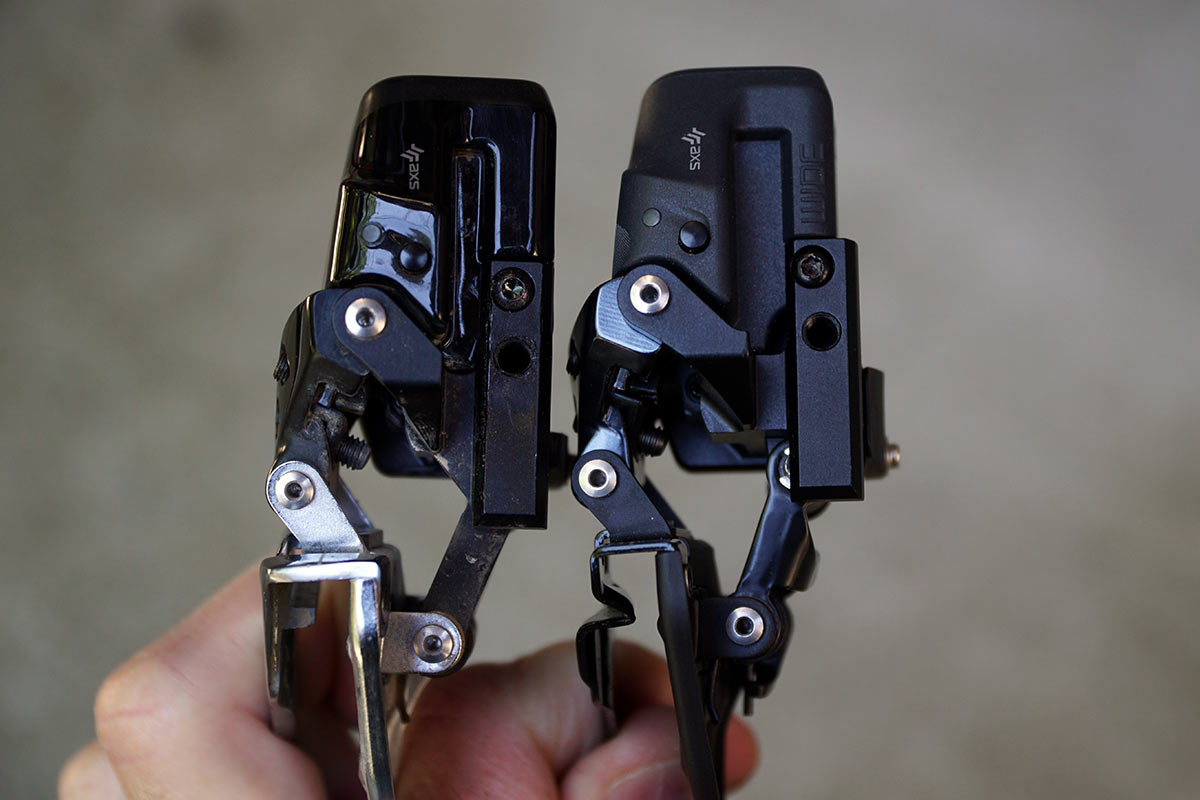
It’s their offset from the frame that’s different. Shown above, you can see the wider body and offset mounting point for the Force AXS Wide front derailleur. This pushes it 2.5mm farther from the seat tube.
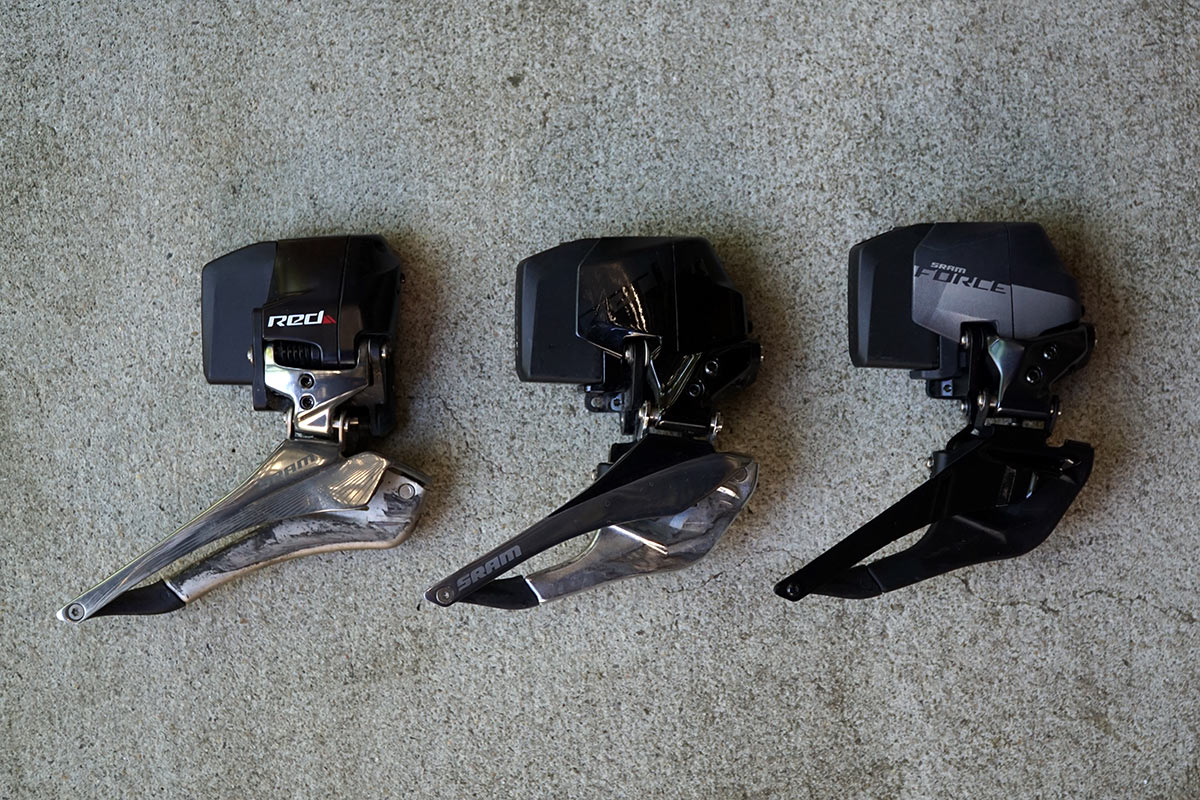
Just for fun, here’s what every generation of SRAM eTap front derailleur looks like. The important thing is how they differ in tire clearance:
The original eTap FD placed the battery far inward (above, left), which limited its use for anything other than a road bike with narrower road tires. Which is all that group was ever really designed for in 2015…”gravel” wasn’t quite a thing.
In 2019, the AXS groups moved the battery farther out (center), which opened up clearance for 700×40 tires, depending on the rim and tire. Now, the new Force AXS Wide (right) moves the whole thing out 2.5mm for clearance up to 700×45 or 650B x 2.1″ tires.
Shown mounted to a Niner RLT 9 RDO with Bontrager gravel wheels and 700×40 tires, I measured 1mm, 3.5mm and 5mm clearance respectively.
Yes, theoretically, there should be a 2.5mm difference between AXS and AXS Wide, but it’ll vary based on how the derailleur is angled, and I may have simply had it angled slightly differently since I wasn’t actually setting the Red AXS FD up for riding on this bike. You get the point.
SRAM Force 36T wide range cassette & rear derailleur
Moving to the back, you have a more modular system. The new Force AXS Max 36T rear derailleur gets a longer B-knuckle than the original, which maxed out at 33T. This pushes the parallelogram, pulleys and everything else just a bit lower to clear the larger 36T cog on the new 10-36 cassette. It’ll also work with their 10-33 and 10-28 cassettes.
It keeps their not-quite-a-clutch hydraulically damped Orbit chain management system that keeps the cage, and thus chain slap, under control.
All AXS rear derailleurs will now ship with their maximum tooth capacity printed on them, helping you identify the largest cassette you can use with it.
This one has a maximum gap of 39 teeth, which is determined as such:
(big cog – small cog) + (big ring – small ring) = tooth gap
So, in this case, 26+13 = 39 teeth.
As luck would have it, all of SRAM’s new 12 speed cranks use a 13-tooth difference between chainrings, so you can match this new rear derailleur and the 10-36 cassette with any of their 12-speed chainring combos, all the way up to 50/37.
The 10-36 cassette is a one-piece cluster using pinned construction. It mates to their XDR freehub body.
It’s more than just a larger 36-tooth cog slapped on the end of the prior 10-33, the gear steps have all been adjusted for smoother shifts up and down the cassette.
Any questions? What does it all mean?
The real question is why. Why make so many changes that require different parts when you could just throw an Eagle rear derailleur and cassette on a 1x set up and get massive range?
Well, you could. But you’d lose the finer gear steps, and still not have quite as much range:
The new “Wide” combo nets you a 516% range with all parts used. Note the use of their previously smallest crankset, the 46/33, still gets you more than the 500% range offered by a 1x setup running their Eagle AXS mountain bike cassette and rear derailleur. Just barely, but remember kids, gear steps. But also weight and less tire clearance. Pick your poison.
This brings SRAM’s 12-speed cassette options to four. The chart above shows the gear steps and tooth counts for all of them, along with Shimano’s current road and GRX gravel cassette options.
Check out this post if you want to see how these compare to traditional road gearing.
Back to why? It’s also about tire clearance. We’re running wider tires, and want the option to run the widest tires we can. It’s tough to justify buying expensive parts if you know they’ll limit your options down the gravel road.
Which AXS parts work together?
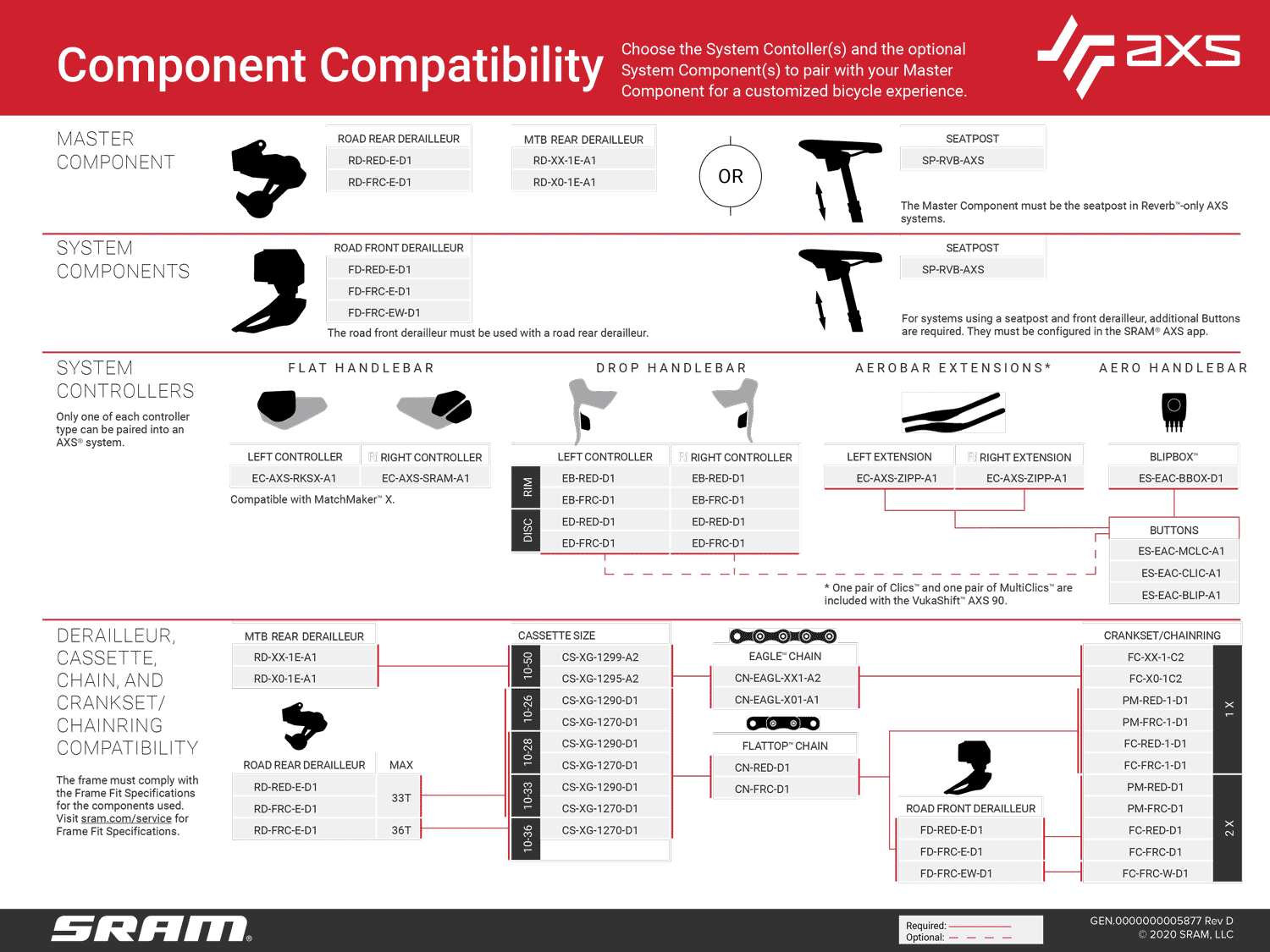 Can I mix SRAM eTap AXS road shifters with an Eagle AXS rear derailleur? What about a Reverb dropper post? Yes, and yes. And you can mix mountain bike shifters with road parts if you’re building a flat bar speed bike.
Can I mix SRAM eTap AXS road shifters with an Eagle AXS rear derailleur? What about a Reverb dropper post? Yes, and yes. And you can mix mountain bike shifters with road parts if you’re building a flat bar speed bike.
The chart above shows all possible combinations and which cassette sizes work with which rear derailleurs, etc. Click to enlarge. And remember, their AXS app helps you customize the controls to do what you want, turn on sequential shifting, and other party tricks.
The important thing to remember about the new Force “Wide” parts is that you need to pair the front together if you want the 43/30 compact gearing, but you can use the rear derailleur with all but the smallest of their 12-speed road cassettes.
SRAM Force “Wide” pricing & availability
The complete group will set you back $1,450, plus two batteries (around $55 each). All parts are available now.
Stay tuned for our first ride impressions, video and actual weights, coming soon!
